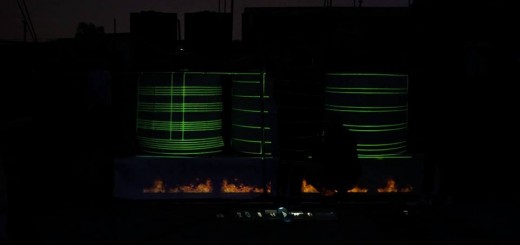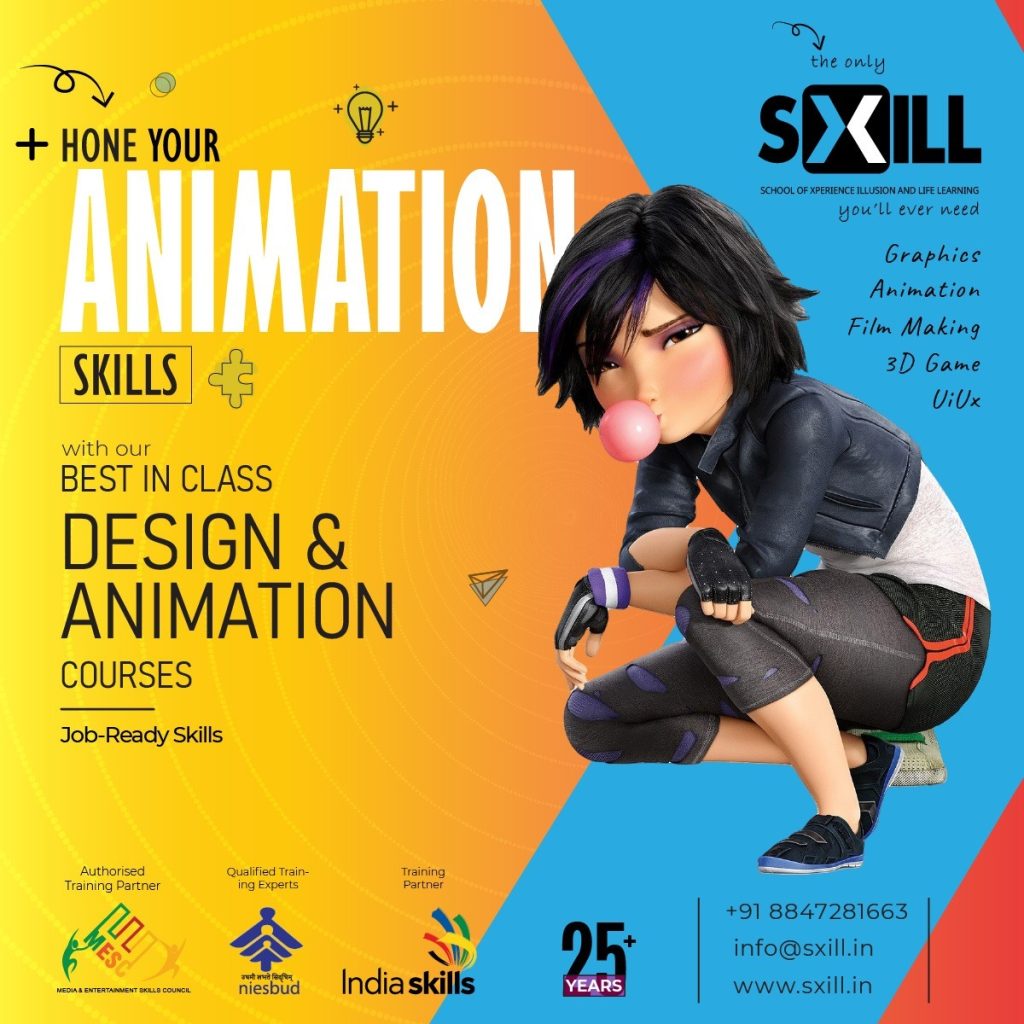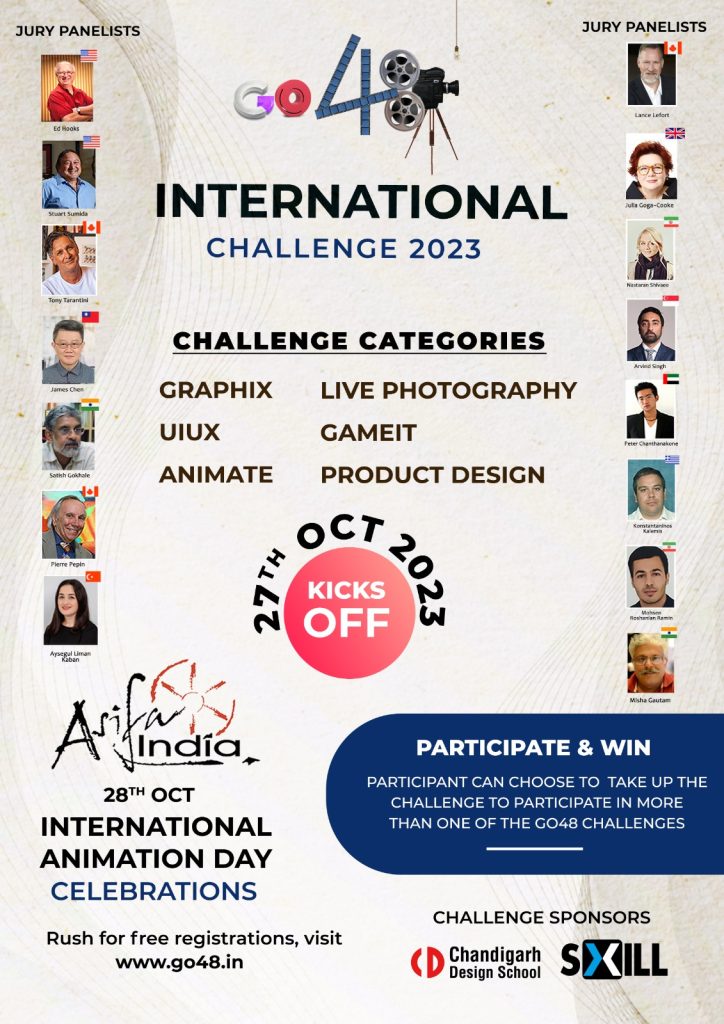Animate your dreams – Animation Styles
Imagine a life of static images, where your favorite cartoon characters are non-existent, where dinosaurs do not inhabit ‘Jurassic Park’ or you cannot relive the sinking of the ‘Titanic’, albeit cinematographically. Awful, is it not? Thank God for animation!
Derived from the Latin word ‘anima’, meaning soul, animation breathes life into characters and is increasingly becoming popular across all channels of entertainment and multimedia. Aided by Digital graphics and powerful tools, animation has added a powerful dimension to the arena of glitz and jazz, lifting and enlivening anything, be it a movie or a music video. Animation is of different types, the most basic differentiation being 2D and 3D animation. While 2D or classical animation has its own charms, 3D animation has captured the imagination of one and all.
Animation has historically been produced in two ways. The first is by artists creating a succession of cartoon frames, which are then combined into a film. A second method is by using physical models, e.g. King Kong, which are positioned, the image recorded, then the model is moved, the next image is recorded, and this process is continued. In either case, hand-drawn cel animation or stop-motion animation, the process is repetitive and time-consuming.
2D or two-dimensional animation is also known as classical animation, where 2D images are created mainly with hand drawings. 3D or three-dimensional animations are a series of images created using computers or any other digital media. Both 2D and 3D animation can be created digitally and is the most commonly used form. Digital animation has the power to create effects not possible with classical animation.
Cell Animation – Cell animation is the most commonly used form of animation and is used by most studios. In this form of animation, the drawings are divided into ‘key frames’ ‘in betweens’, and clean ups’. While Key Frames are the main frames that signify the change in speed or position or both, In betweens are placed in between key Frames to provide a smooth movement. Clean ups are the final frames that comprise the entire animation, key frames, and in between together in one line to help in ink & paint and to know the area of drawing properly.
All the frames combine to make an animation film. These frames are then captured in a stop motion camera and then line tested. The most popular form of animation, some popular movies made using this process include ‘The Lion King’ and ‘Pocahontas’.
Puppet Animation – An interesting and exciting form of animation, its output is the most enchanting. After the characters are decided on and the puppets made, the decided movements of the puppets are shot using a stop motion camera and then projected. This kind of animation is made on a small scale and typically used in short stories, which are basically made with the aid of stop motion cameras.
The movie, ‘The Nightmare before Christmas’ was made using Puppet Animation.
Cut-out Animation – A unique form of animation, the artist first draws the character on paper or cardboard. Next, with the help of a scale bar or a field chart placed below, the cut outs are shot on a stop motion camera. Later, the scale bar is removed, a background is captured, and the two are composed together, making the final film ready. Not a highly popular form of animation, it helps in an absolute and complete study of character, its movements and forms.
Sand Animation – Sand animation involves manipulation of sand. The more common form of sand animation is to manipulate the sand using tools or your fingers, and then photograph the individual frames with a camera, either film or video. You can also drop the sand on a sheet of glass and place that on top of a scanner. This method gives you a “flatter” look, since the images are captured from below.
Clay Animation – Clay animation allows you to use your artistic and creative talents while using clay and technology to communicate and tell a story. After making a detailed character sketch, the character is made into a clay model. First a skeleton of the entire structure is made and paper or sponge is added to it to create mass. Next, a thick layer of clay is placed on the skeleton and the desired structure created.
While capturing clay motion, each and every position is placed and then captured with a motion camera. One of the most memorable clay animation movies include ‘Chicken Run’.
Vegetable Animation – An amusing form of animation, it follows the same production process as cell animation. However, it is completely different in its manner of presentation. In this process, the character to be animated is based on a vegetable and shaped like a vegetable. Key frames are made keeping in mind the vegetable that is being animated.
Frame-based animation – Such animation is created by making a series of individual cells, Flipbook animation, tweened animation and static animation being the three types of frame-based animation.
Flipbook animation – Electronic tools are used to create ‘flip book’ animation on screen. The animator draws a sequence of indivudual frames that change gradually from one frame to another, and when the frames are shown in sequence, the images change from frame to frame.
Tweening – The animation draws key frames posing backgrounds and characters on a screen, and then defines the paths that the characters follow during the scene. Software used draws the in-between frames by using a process called ‘tweening’ to create the illusion of movement.
Static animation – Static animation is a sequence of one key frame that does not change. Static animation is used to create background images that serve as the contexts for moving images. Though not animation strictly speaking, it is an important part of creating an animation.
Morphing – Have you ever seen an animated character changing shape all of a sudden? This is due to morphing, a type of animation that transforms the form of an object to another smoothly.
3D Character Animation – This kind of animation is used to create characters that are more realistic in form and appear to move through three-dimensional space. For example, a full-length movie such as ‘Toy Story’ seems amazingly real. Character animation means constantly jumping back and forth between modeling and animating. You model a character and then test it with your animation tools.
3D Animation – 3D animation consists of varying properties of a 3 dimensional scene defined in numerical quantities. A 3D model can change properties such as position, rotation, shape and surface style. An animated 3D scene is defined by the change of these numerical properties through time. 3D computer animation uses a rendering machine to draw successive frames wherein some aspect of the image is varied.
Says Atul Vohra, National Head – Arena Multimedia, “To become an animator, you need to have a creative bent of mind with application knowledge, hard work and of course flair to dabble with the unknown.
You could pick up a course from a reputed institute like Arena Multimedia & you could all be set for a career in animation. The careers that go with it are as good as they get. A creative fresher would start as a junior animator and then quickly graduate into a senior animator, Lead animator and a Project leader and so on. The employment opportunities for Indian professional in this industry are in movie productions, TV software companies, entertainment and ad agencies, educational multimedia segment and product and architecture design.”
The speed of career growth is enormous, as Animation has been rated the fastest growing segment in the IT enabled services segment. With trained animation manpower now a reality, India is poised to take off vertically in this segment.




